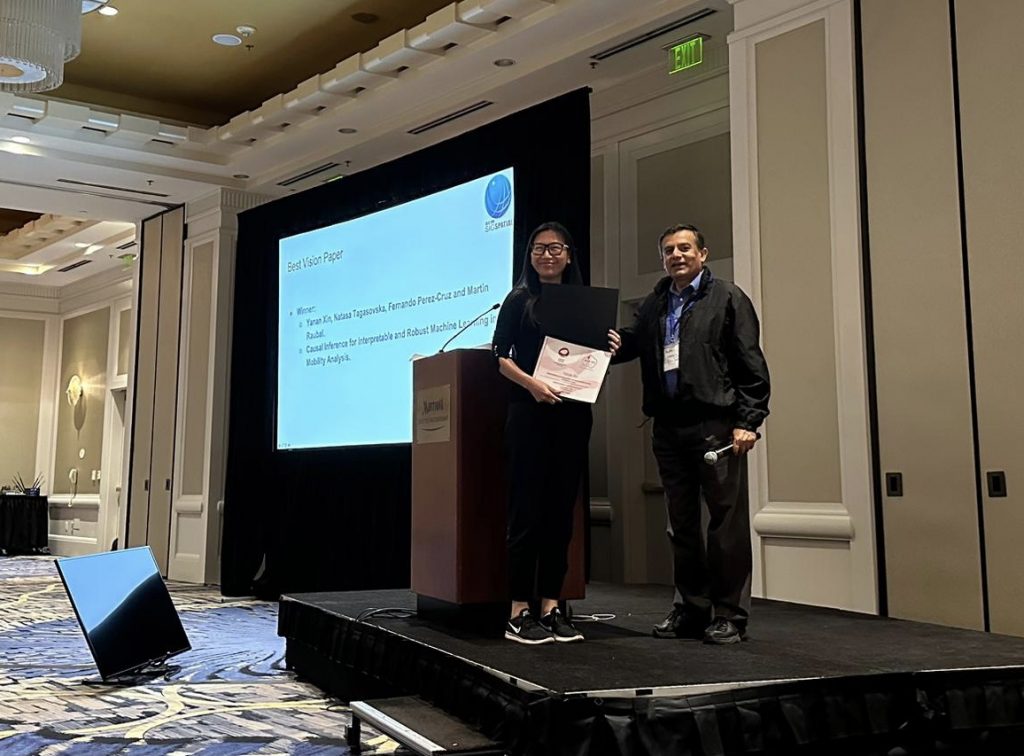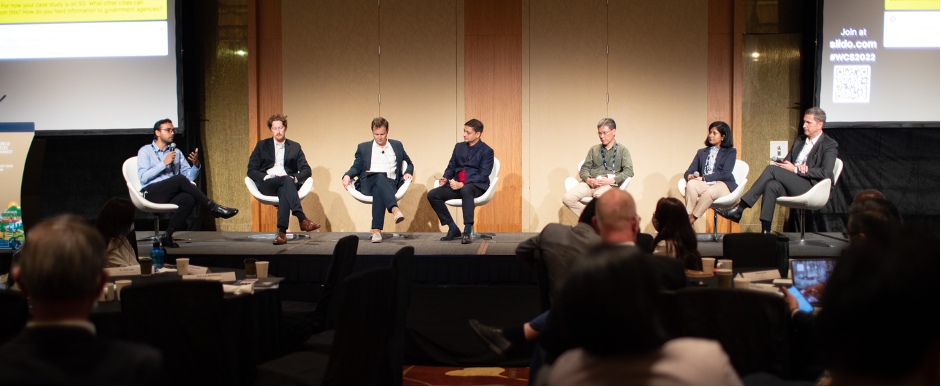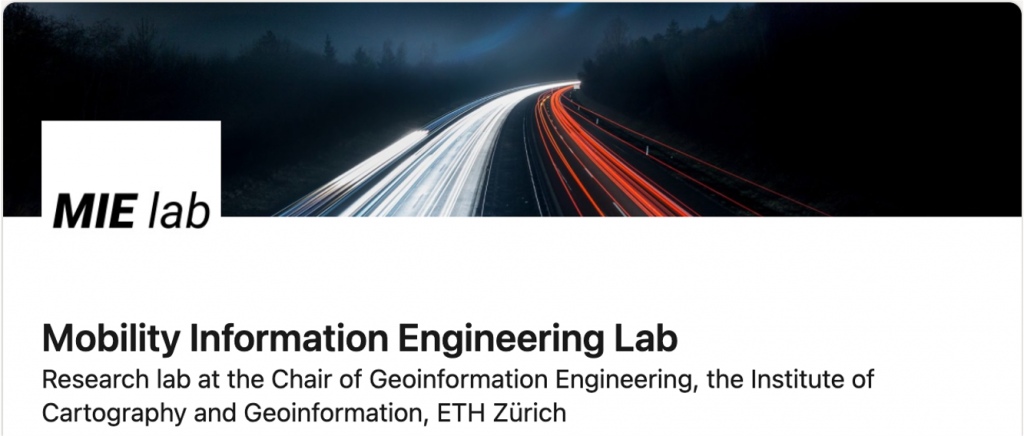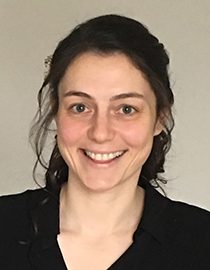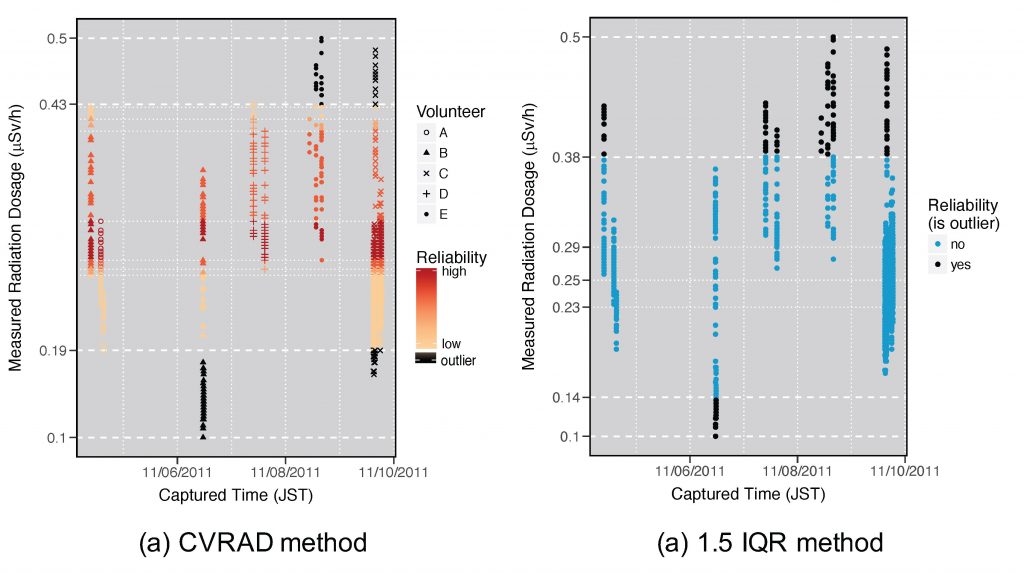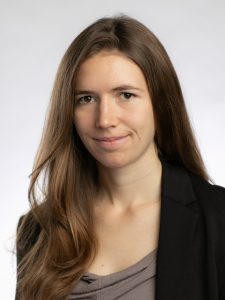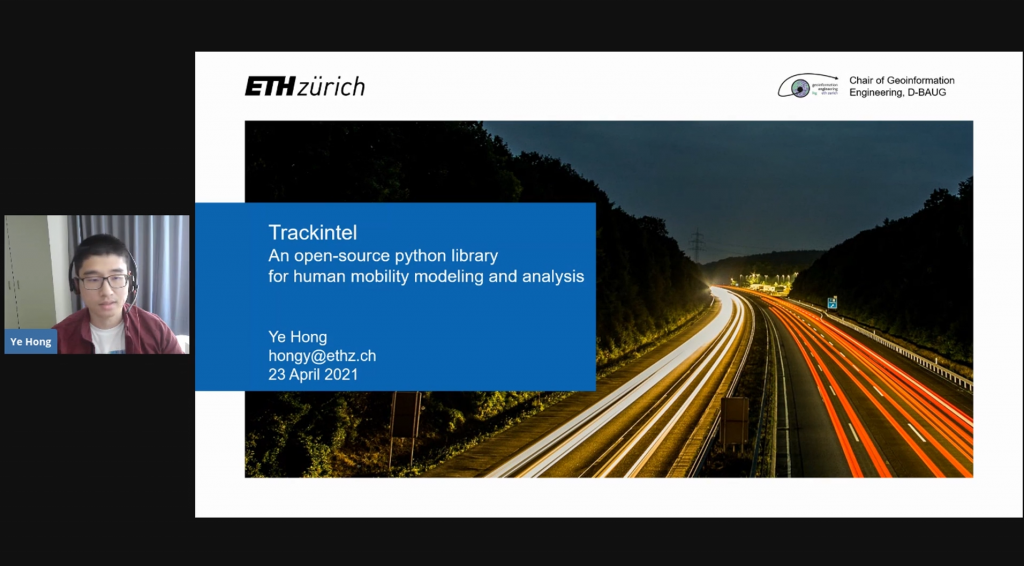Our paper “Causal Inference for Interpretable and Robust Machine Learning in Mobility Analysis” won the Best Vision Paper Award at the 30th ACM SIGSPATIAL Conference in Seattle, USA. This year’s vision paper selection has been very competitive given the large number of submissions. Among the six selected vision papers invited for presentation, our paper, presented by Dr. Yanan Xin, received the best vision paper award. In this paper, we envision opportunities for utilizing causal inference to enhance the interpretability and robustness of deep learning methods and address challenges in mobility analysis. This direction will help us build safer, more efficient, and more sustainable future transportation systems. For more information, check out our paper and a pre-recorded video presentation.
The vision paper also highlights what we aim to achieve through our project “Interpretable and Robust Machine Learning for Mobility Analysis”. Stay tuned for more exciting results coming from the project!
